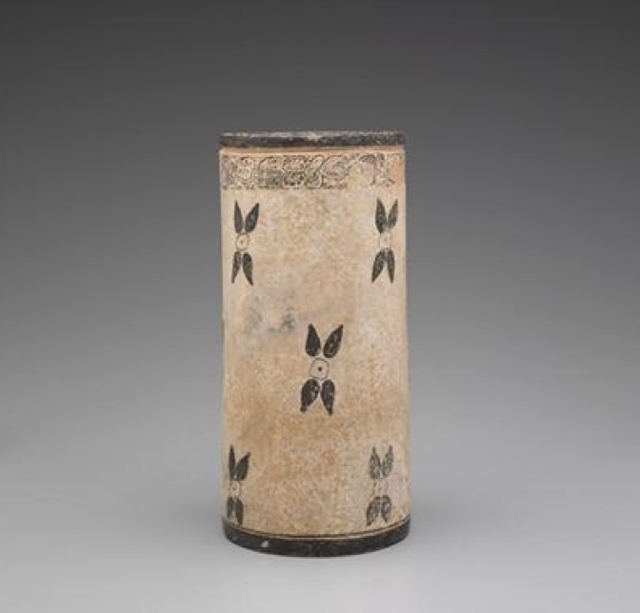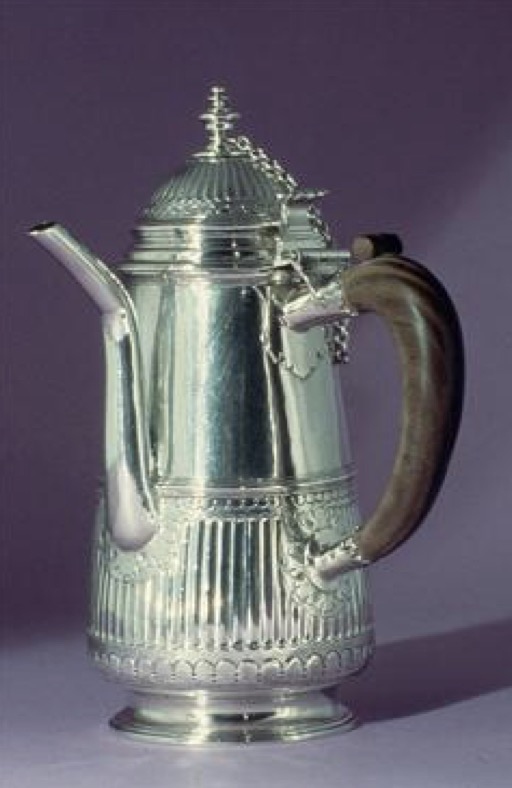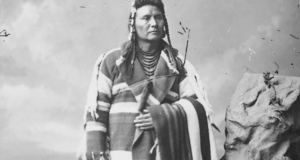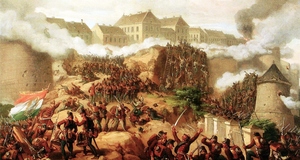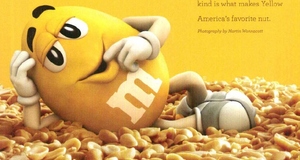Featured Article:Cacao Cravings: Europe's Assimilation and Europeanization of Chocolate Drinking from Mesoamerica, 1492-1700 C.E.
By
2017, Vol. 9 No. 10 | pg. 1/2 | »
KEYWORDS:
Chocolate is a foodstuff that many people in the modern world take for granted; the sweet treat can today be found plentifully and cheaply in practically any store all across the globe, especially in the Euro-American world. Despite its commonplace, most people do not know exactly where the addictive confection came from and how it became a near staple of industrialized, modern societies. Many in the ‘Western World’ would be surprised to learn the true origins of chocolate and how it first became a European craze. Chocolate was a confection made mostly from powder that originated from the seed of the pods of the cacao tree, which is native to equatorial America. Europeans and the entire western hemisphere had no concept of chocolate before the colonial period; before then, chocolate was unique to Native American societies, and particularly to the great cultures of Mesoamerica like the Maya and Aztecs. However, all recognizable signs of Aztec and Mayan culture have been stripped from the confection as a result of its assimilation into European society before chocolate’s global proliferation. This essay examines chocolate and its transformation as a result of two hundred years of Europeanization. It analyzes the obstacles traditional Mesoamerican chocolate faced during overseas assimilations and some of the various processes that Europeans utilized in order to transform chocolate culturally into a product that was acceptable for popular consumption in European society. In this way, the wide discrepancy between and consequences of the transformation of chocolate is clarified and its significance to posterity revealed, especially as it relates to the Western world. One can grasp the magnitude of the changes resulting from the assimilation of chocolate from Mesoamerica to Europe simply by comparing the ‘old’ and ‘new’ vessels used to serve it. Take, for example, an ancient Maya chocolate drinking vessel from circa 700-800 C.E. (see Figure 1).1 The vessel is ornate, cylindrical, and made from clay slip ceramics and decorated with flower motifs and Mayan hieroglyphs around the rim, identifying the vessel’s owner and purpose.2 The vessel was also a burial item, identifying it and chocolate as materials that were dear enough to the deceased and his culture to warrant a ceremonial and possibly sacred place with the dead.3 Such a vessel is indicative of the Mesoamerican cultures that held quasi-consistent views about chocolate before the Spanish conquests from 1492 onward. This vessel represents the spirituality and ritualistic components of the drink before European assimilation.Fast-forward to 1701-1702 C.E., and European accoutrements for chocolate drinking do not resemble traditional chocolate vessels in the slightest, as the vessels made by an Englishman named Joseph Ward reveal (see Figure 2).4 This chocolate vessel intended for a European audience resembles a vertically elongated silver teapot complete with spout, lid, and a wooden handle. This early modern European vessel dating from the first period of the chocolate ‘boom’ in Europe is indicative of the assimilation that took place, as it is completely unrecognizable from the Mesoamerican vessels that came before it. It is of a completely different material - silver - that marks it as an upper-class item, and is void of any markings that link it to any form of spiritualism or ritual significance. Thus, these two vessels demonstrate the active separation of a consumable substance from its external visual representation of two cultural ideas about chocolate. In order to fully understand the beginning of European cultural assimilation of chocolate as seen in the change of vessel types, it is important to understand what the confection meant in its original cultural context. This is especially true because chocolate, at the time of its first contact with Europeans, was practically unrecognizable from the substance that it would become after being incorporated into mainstream ‘Western’ society; deconstructed by those endowed with authority in European religion and science. This was particularly relevant to European religious society because in pre-Columbian Mesoamerican cultures, chocolate was a drink endowed with the essence of the sacred, and was obviously made with spices and recipes that included only ingredients native to the Americas. For example, chocolate was a substance that for Mesoamericans was teotl, or ‘sacred energy,’ on par with the spiritual power of blood and famously used for Mesoamerican blood (human or otherwise) sacrifice rituals.5 As historian Marcy Norton elaborates, “chocolate enters this belief system as a metaphor, surrogate, and exchange item for blood.”6 This intrinsic connection of chocolate and blood is crucial to understanding the confections’ original context because through this relationship, chocolate is shown to have been more than just a drink to be enjoyed. Instead, chocolate was something that represented the essence of life and sanctity, therefore it was treated with respect and had extreme cultural and economic value. Chocolate was even used as an offering, or ‘blood-surrogate,’ in religious ceremonies such as the Mexica fertility celebration of Tlaloc the rainmaker.7 Thus, it is clear that although chocolate was used as a drink to be enjoyed at feasts and social gatherings similar to how it was in early modern Europe, it imbued a strong sense of spirituality that was for the most part dropped through the assimilation process. Though Mesoamerican ideas about chocolate were somewhat varied, they all retained similar attributes. Delving into the tenets of chocolate’s place in pre-Columbian spirituality illustrates some of the reasons why so many Europeans were initially resistant to consuming the product. Though different groups admittedly had separate traditions and attributes assigned to chocolate, the differing traditions converge to demonstrate that, generally, the confection is sacred because of its similarities to blood. The Maya, for example, held that chocolate pods, which grow directly from tree trunks, were “imbued with k’ik’” or the spiritual life-giving quality that flowed through plants in the form of sap and in animals in the form of blood.8 Since the blood of animals and sap of plants (like cacao) keep organisms alive, these fluids in the minds of Mesoamericans were symbolic of the divine gift of life. Life was something to celebrate and give thanks for, especially through blood and chocolate offerings. Completely prepared chocolate in its original context was in fact a reddish color similar to blood, and when drunk has stimulating physiological effects on the body and mind, literally exhibiting the life-giving nature of blood.9 Therefore, as symbols and actual life-sustaining substances, blood and chocolate were seen as apt gifts to give to temperamental deities from whom life came and was continued. Though these beliefs are transmitted to posterity through the skewed lens of Spanish writers that depicted them as alien and pagan as possible, the essence of Mesoamerican beliefs can still be gleaned. Due to and coinciding with the sacredness of chocolate, the drink was used in ancient Mesoamerican societies as a powerful social lubricant and status symbol. Chocolate would accompany important social gatherings as a status symbol, spiritual lubricant, and accompanied good hospitality, solidifying relationships.10 According to the Franciscan friar and 16th century ethnographer Bernardino de Sahagún, at a merchant gathering participants drank chocolate alongside hallucinogenic mushrooms in order to see visions of the future: “One saw in a vision that he would die in battle; one saw in vision that he would be eaten by wild beasts…”11 Hence chocolate was inherently spiritual even in social gatherings, and was likely included in such gatherings because of its sanctity and social value. Christian leaders would have seen such psychedelic gatherings as a threat, both because it made people seem possessed by evil spirits and because their social implications could facilitate the fomentation of anti-Spanish resistance. Since chocolate was part of the basis of these gatherings and spiritual awakenings, the substance must have been viewed as both dangerous and powerful to Europeans. Chocolate was an expensive and precious commodity and sharing it with friends, guests, or potential business powers would have created and strengthened interpersonal bonds among those who shared it. Giving chocolate as a gift to another mortal was deeply intimate, because if it was also a fitting tribute for the gods offering it to another mortal was an unmistakable sign that chocolate in a secular social context connoted status and intimate interpersonal relationships. Chocolate’s pseudo-magical properties also revealed its influence in social occasions when Montezuma reportedly called upon the drink’s aphrodisiac properties, as some Spanish writers account that he used to take chocolate before going to consort with his wives in order to make himself more virulent.12 Of course, we will never know if the story about chocolate and the Aztec ruler’s sex life holds any basis in fact, but even for a story like it to be invented by Spanish travelers and colonists the substance’s value must have been extremely evident during early Spanish-Aztec interactions with Mesoamerican nobility. After all, chocolate was so precious in secular sections of Mesoamerican society that cacao seeds were used as a form of currency.13 However, ethnographies like Sahagún’s must still be viewed with suspicion, even though they are the majority of modern source material pertaining to Pre-Columbian societies. This is due to European colonialist suspicion of anything ‘idolatrous’ or ‘pagan’ in Mesoamerican societies. Even by Sahagún’s time most indigenous texts pertaining to items like chocolate and its sanctity were burnt and people with oral knowledge of such objects and practices killed off.14 Therefore, before chocolate could be culturally absorbed by Europe, it needed to be stripped of any memory of its sanctity, and approved by interested leading authorities on the ‘true nature’ of a substance in early modern Europe: physicians and the Church. Marcy Norton asserted in her comprehensive work Sacred Gifts, Profane Pleasures that while the Catholic Church condemned Spaniards and Creoles in America that consumed chocolate and participated in the associated Mesoamerican customs as “idolaters” and heathens, the popularity and spread of chocolate consumption to Europe was attributable to the known indigenous meanings attached to chocolate.15 This assertion is too far-reaching, because while it must be admitted that it was inevitable and crucial for Creoles to know about and participate in native concepts of chocolate ritual, it does not follow that Europeans overseas would be so accommodating. Original contexts served more as a huge obstacle to chocolate’s spread to Europe. It is easy enough for people to accept a practice when they are the relative minority in a culture, such as colonizers and Creoles in Mesoamerica, but it is nearly impossible for a substance such as chocolate to become popular in a far-away land where indigenous rituals and associations are so antithetical to the cultural authorities of a region. In order for chocolate to reach mainstream European society, it had to be assimilated in a way that stripped it of its original Mesoamerican connotations. Contrary to Norton’s argument, chocolate’s proliferation across Europe was “in spite of the meanings Indians attributed” to it.16 Those aspects of chocolate that retained similar meaning to both cultures were screened through the lens of Catholic doctrine and contemporary European scientific theory. Europeans found it necessary to avoid chocolate’s original social and religious meanings because accepting those connotations would have meant acting against strongly held European ideas and prejudices about non-European goods and modes of thought. European ideas about religion, science, and medicine particularly posed severe obstacles against the transmission of chocolate’s socio-spiritual qualities and, correspondingly, against the assimilation of the addicting product in general. All three of these areas during the time of European colonization of the Americas overlapped and drew upon each other during debates over hotbed issues such as the acceptance of drinking chocolate. These areas also had long and complicated histories in Europe, science and medicine in particular were experiencing a rebirth in the area due to the ‘rediscovery’ of ancient treatises on science and medicine by Classical scientists, philosophers, and physicians. The ‘rediscovery’ resulted from the process in which places like Spain, that had for centuries been controlled by Muslim lords were conquered by Catholic forces. Thanks to Islamic scholarship Classical Mediterranean documents and treatises were preserved and expanded upon; then Catholic invaders read them for practically the first time since Rome’s fall. By 1492 C.E., ancient physicians such as Galen and the theory of the four humors experienced a rebirth of popularity in Europe, which influenced the way they perceived America and its affects on European bodies. Chocolate, as an American product, was subject to those ideas. For chocolate to become assimilated, it had to pass inspection of this neo-classical humoral theory. Humoral theory caused Europeans to believe that anything American was harmful to their bodies because ‘science’ toted that climate and food had direct influences upon the composition of individual bodies. Foreign climates, exercise, sleep, foods etc., if consumed and lived by for prolonged periods of time, had the potential to transform a person’s physical characteristics to those of the people native to that climate zone. As Rebecca Earle comments, “even travel within Europe posed serious challenges to individual health,” because even different European nations experienced different climates and diets that were thought to have contributed to each one’s unique culture.17 Traveling to tropical America for a European would have been akin to going to the moon, if merely trekking from Spain to Denmark was thought to negatively impact the composition of the body. This is evident by the way people such as the Spanish viewed Native Americans and how the two ‘nations’ (in the most ambiguous form of the word) became so dissimilar in appearance and behavior. Humoral theory utilized during the time of Spanish colonization of the Americas stated that one should seek a balance of the natural levels of humors that one was born into based upon the natural climate and diet available in one’s place of birth.18 Blood, phlegm, and black and yellow bile of the body corresponded in this theory with heat, cold, dryness, and moisture.19 The latter four descriptors were used to describe the ‘true nature’ of any living thing, food, or climate. Certain humeral properties corresponded with certain climates, which determined the nature of all things, as even Vitruvius stated in a digression within his books on architecture: “the position of the heaven with regard to a given tract on the earth leads naturally to different characteristics…”20 Because tropical America is dramatically hotter, wetter, and more lush than Europe, it seemed natural to Europeans that they and Native Americans would be different. American climate produced foods that theoretically affected Native bodies in profound ways, while other factors, such as the climate, forced Native peoples to think, act, and look different than Europeans. Chocolate was a quintessential American foodstuff only able to grow in the particular equatorial American climate, and therefore was representative of what made Mesoamericans different from Europeans. For chocolate to become assimilated by Europeans, it either had to be reasoned to be by nature not truly American or that climate did not play as large a role as previously thought on the body. Due to humoral theory, consuming New World foods like chocolate for an early European colonizer or conquistador would have meant risking a literal transformation into a Mesoamerican. This was because food, especially coupled with climate, was thought to sustain and support or change a person from the inside out based on its properties of heat versus cold and dryness versus moisture, leading to the possibility that by consuming the food and living in the land of the Mesoamericans a Spaniard could literally and physically ‘go native’ and “lose their prized [beard] as a result of living in the same environment.”21 Ironically, many American foods and people were thought to have cold and either dry or moist properties, while Spaniards (men) who actually lived in a colder climate originally were thought to have been hot and dry.22 Women, in general, were also seen as being cold and moist, so labeling Mesoamericans as such was convenient for the Spanish invaders with their misogynistic and ethnocentric mindsets.23 Chocolate, being a staple of Mesoamerican culture, at first glance would have thusly been seen as a substance that must have contributed to the Native people’s coldness and dryness, and therefore something that the Spaniards would have thought to generally avoid. Yet, even though the Spanish strove only to eat imported or locally grown foods of European origin as to best assure that their ‘true natures’ were upheld, eventually necessity and the inevitability of cross-assimilation brought Europeans to consume and enjoy American foods like maize and chocolate - until they used it as a scapegoat for some sickness.24 As time passed, foods and drinks like chocolate would have become more entrenched in the Spanish communities in America because of their innate qualities that make them palatable. These Spanish Creoles and travelers to the Americas naturally began to want to bring back and justify their new habit of consuming chocolate to their European homeland. Creole assimilation was therefore crucial to the successful deconstruction of chocolate’s apparent foreignness and perceived hostility. Science and medicine were also crucial in making chocolate merely ‘exotic’ rather than foreign and dangerous in the eyes of European society, since physicians offered alternative and attractive justifications for the new chocoholic habits of Creole colonizers. Physicians in Europe, for example, began in the 16th and 17th centuries C.E. to prescribe chocolate as a treatment to a variety of illnesses or discomforts (but strictly in moderation) as opposed to recreational consumption in order to prevent any dangerous risks of disrupting the patient’s body as previously feared instead of returning it to its natural balance that had been disrupted by a sickness.25 In order to find the appropriate medical application for chocolate, physicians debated the true nature of chocolate’s humors. They debated since chocolate was made up of ingredients that had many different perceived humors; even cacao had contrasting humors within itself. What was one to think of a drink that had enumerable parts of either cold and hot, as well as dry and moist? Was the drink perfectly balanced, or did some of its ingredients form a majority of certain properties? Chocolates’ appropriate medical usage during the European colonial period hinged on the answer to these questions. The Spanish physician Antonio Colmenero de Ledesma is a good source for viewing the fierce debate over medicinal chocolate with his 1631 C.E. treatise concerning chocolate. He acknowledged the chocolate controversy before stating his professional opinion:
While Colmenero acknowledges the debate by stating that many have differing opinions concerning chocolate’s safety and medical properties, he definitely reveals his support for the confection. He uses ‘empirical’ evidence in support of it by stating that even those who drank the hot beverage during the hottest days of the summer did not harm their constitutions, but exposed his personal obsession with his digression on how ‘wholesome, and so good’ chocolate tastes. Colmenero displayed that there was a will and a way to justify chocolate through European science and logic. He then argued that chocolate without spices has in it different parts such as cacao oil, fat, and powder that each represent independently contrasting natures of cold, dry, hot, and moist.27 The physician’s explanation is indicative of the beginning of chocolate’s assimilation into European society, starting with the scientific community, and the fact that his work was translated into other languages speaks to its wide influence. Within Colmenero’s treatise, there is evidence that during the time of the composition of the treatise there was still some need to ‘explain away’ the mysteries of the foreign drink. Colmenero used analogy to familiar European foodstuffs that had duplicate natures similar to chocolate in order to make his theory more palatable. He also called upon the ancient authority Galen in his defense of his labeling of the triplicate humors of chocolate:
The combination of the indisputable authority of Galen, from whom along with Aristotle and Hippokrates the basis of early modern European medical theory was drawn, and the comparison of chocolate with the universally recognizable example of milk was a clever device in Colmenero’s defense. With this device, not only would scholars be content with the reasoning but also literate people wealthy and interested enough to procure a copy could find the explanation relatively comprehensible, and reliable enough to use as a support their own consumption of chocolate among skeptical members of European popular society. The devices made chocolate seem less foreign because it had, in European minds, the same properties as familiar and ‘safe’ milk products. It also had ‘science’ backing it, stating that it did not innately present a danger to European bodies. In this way, chocolate was beginning to transform from dangerously ‘foreign’ to delightfully and familiarly ‘exotic.’ While the treatises of men such as Colmenero certainly opened the door to the possibility of the popular consumption and assimilation of chocolate, they certainly did not encourage it beyond the realm of medicine. Note, for example, that Colmenero himself in his defense of chocolate said that the drink, while safe in theory, should only be applied with “the moderate drinking of it.”29 It was not, as Albala suggests, until the mid-to-late 17th century that physicians and other authority figures actively spread the practice of consuming chocolate beyond the scope of pure medicinal use, corresponding with the rapid spread of the custom of social chocolate drinking throughout Europe and evident from the prescription of chocolate as a cure for “nearly any ailment.”30 Still, the groundwork for the later transformation of what chocolate became in later European society had roots in some of the other ideas about chocolate that people such as Colmenero proposed. This foundation was the process of chocolate’s assimilation through tinkering with the recipe; there are Galenic explanations for substituting some European or Asian spices for some of the traditional American spices put into chocolate drinks.31 The act of adding and subtracting ingredients from the traditional recipe for liquid chocolate acted similarly to the analogy of milk used by Colmenero. By dissecting exactly what was in chocolate, the potentially nervous European consumer of the colonial period might have been scared off if they could not recognize or pronounce any of the ingredients, just like many Americans (of the USA) today tend to buy products that proudly proclaim ‘made in America’ rather than something that imported. Especially for those dedicated to the theory of four humors, having familiar sounding ingredients made it easier to try new foods because they would have already known the properties of more local or popularly established Asian spices according to the theory, while American goods with complex Mesoamerican names would have presented only mystery about the potential effects from the unknown properties of American spices. Asian spices were ‘safer’ than American spices because they had already existed historically in European markets and consciousness. Colmenero was acutely aware of these issues whilst composing his “receipt” (list of ingredients) for making a chocolate drink:
In this recipe, there are a number of presumably original ingredients as well as ingredients that would have been familiar to Colmenero’s audience such as Spanish red peppers, “Roses of Alexandria,” cinnamon, almonds, hazelnuts, and white sugar. Notice that Colmenero also notes at the end that it was fine if chocolate was made even without any American ingredients other than cacao, “the rest” indicating only the European and Asian ingredients.33 This suggestion is a blatant attempt to suggest that chocolate and cacao are exceptional American products that, unlike others, are ‘safe’ and even ‘beneficial’ for European consumption. This attempt is emblematic of cultural assimilation because it takes something completely foreign to a community and transplants it into a context (in this case Eurasian spices) where it is forced to carry new and unique connotations specific to the culture that appropriates and proliferates the product’s new context. However, Colmenero specifically mentioned the inclusion of achiote for the purpose of giving chocolate the traditional red color of chocolate. Colmenero must not have understood that achiote was traditionally put into chocolate for the red color in order to strengthen the drink’s association with blood, because it is unlikely that any colonial European would approve of drinking anything seen as blood other than the Eucharist. Therefore the inclusion of achiote in this recipe reveals how original contexts of chocolate can be passed down through the generations: misinterpretation, ignorance, or tradition.Continued on Next Page » Suggested Reading from Inquiries Journal
Inquiries Journal provides undergraduate and graduate students around the world a platform for the wide dissemination of academic work over a range of core disciplines. Representing the work of students from hundreds of institutions around the globe, Inquiries Journal's large database of academic articles is completely free. Learn more | Blog | Submit Latest in History |

